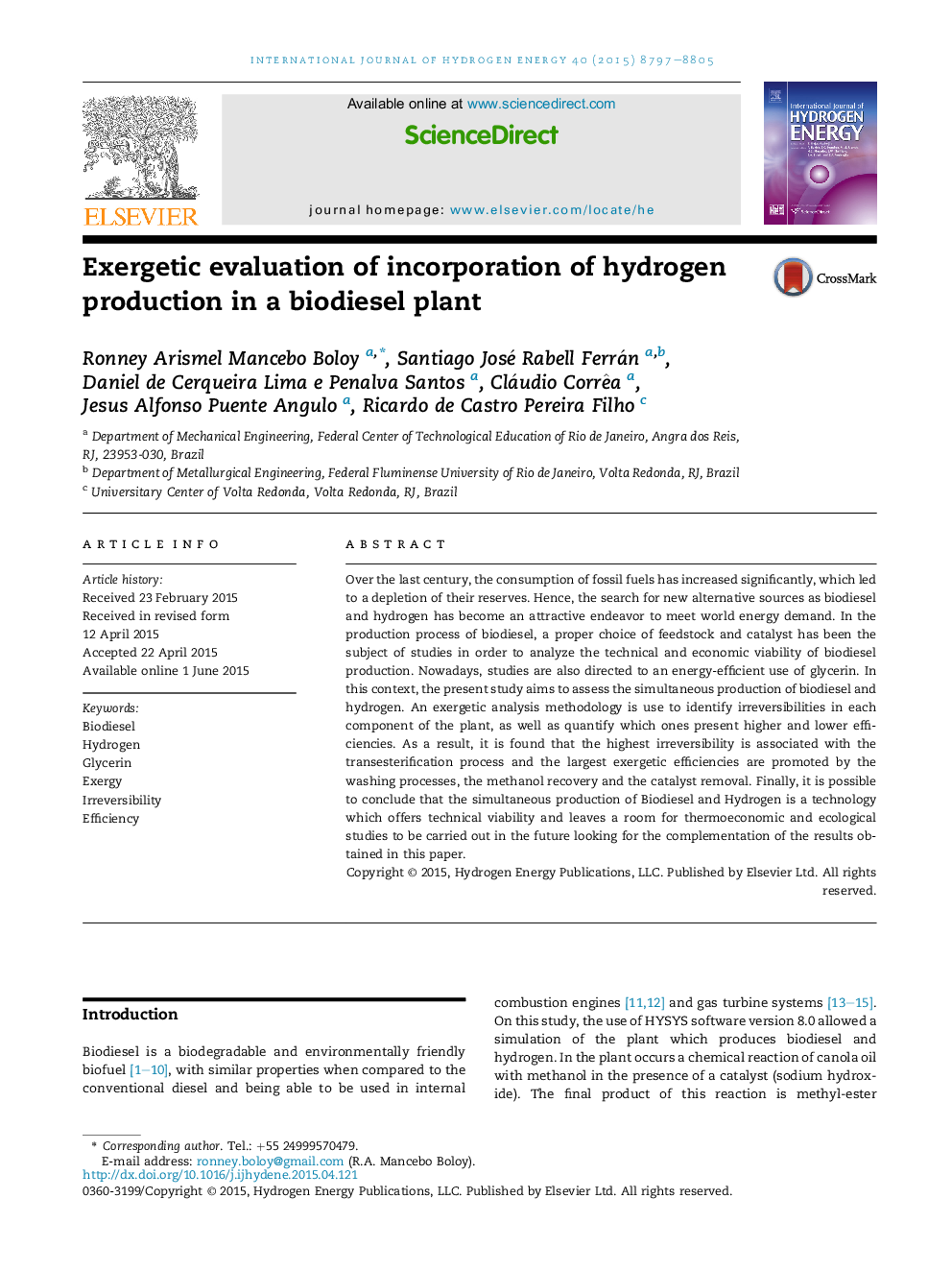| Article ID | Journal | Published Year | Pages | File Type |
|---|---|---|---|---|
| 1275119 | International Journal of Hydrogen Energy | 2015 | 9 Pages |
•The 65.57% of inefficiencies are found in the transesterification reactor.•The minor inefficiencies (0.7%) are locate in the neutralization reactor.•High power consumption and chemical reactions cause most of the irreversibilities.•Hydrogen production presents low power consumption and irreversibility ratio.
Over the last century, the consumption of fossil fuels has increased significantly, which led to a depletion of their reserves. Hence, the search for new alternative sources as biodiesel and hydrogen has become an attractive endeavor to meet world energy demand. In the production process of biodiesel, a proper choice of feedstock and catalyst has been the subject of studies in order to analyze the technical and economic viability of biodiesel production. Nowadays, studies are also directed to an energy-efficient use of glycerin. In this context, the present study aims to assess the simultaneous production of biodiesel and hydrogen. An exergetic analysis methodology is use to identify irreversibilities in each component of the plant, as well as quantify which ones present higher and lower efficiencies. As a result, it is found that the highest irreversibility is associated with the transesterification process and the largest exergetic efficiencies are promoted by the washing processes, the methanol recovery and the catalyst removal. Finally, it is possible to conclude that the simultaneous production of Biodiesel and Hydrogen is a technology which offers technical viability and leaves a room for thermoeconomic and ecological studies to be carried out in the future looking for the complementation of the results obtained in this paper.
